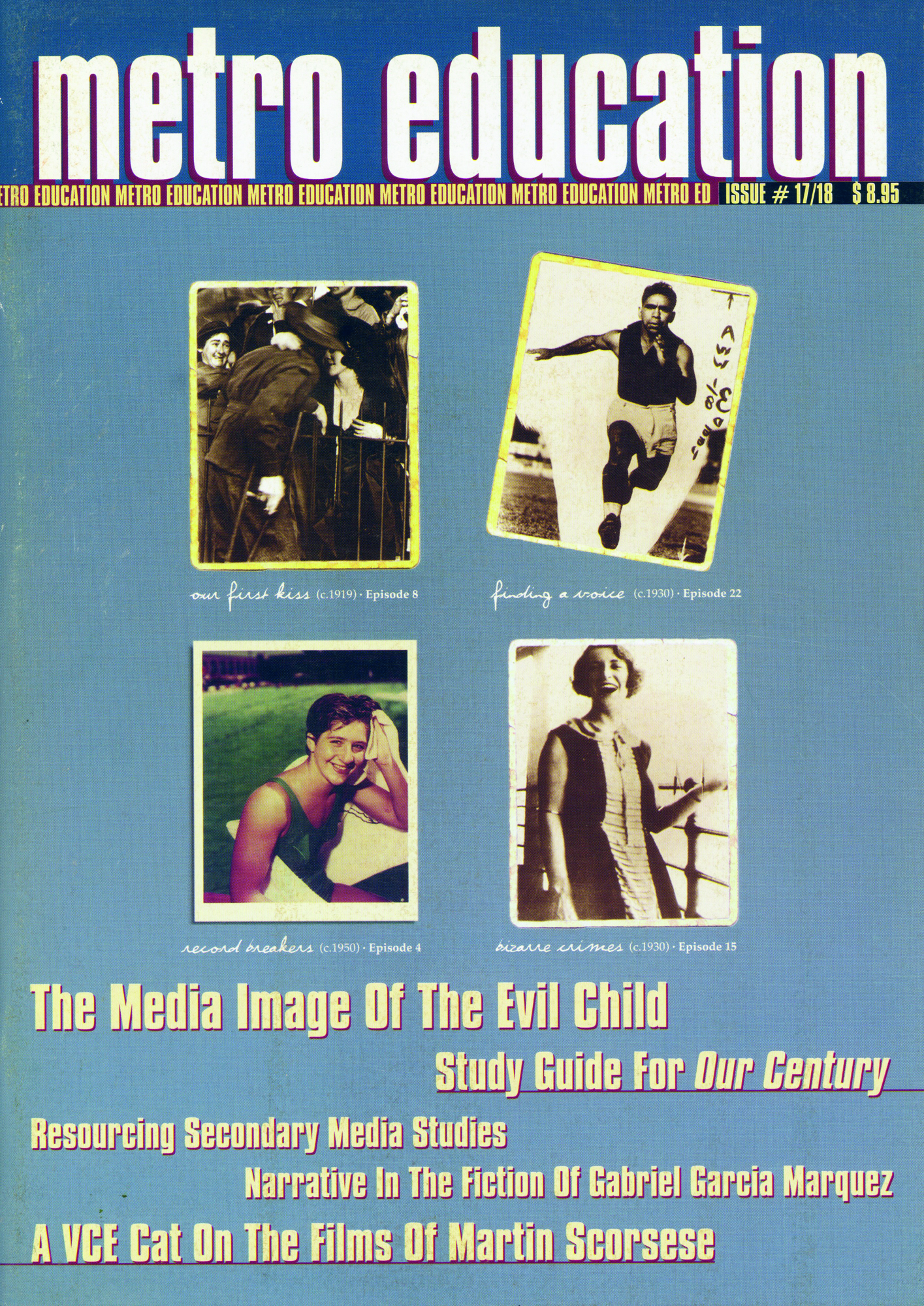Reaching deeply into both academia and industry, Metro has been a bridge between the two for more than fifty years. It provides a unique and extremely important cultural record that, since 1963, has authoritatively documented the shifts and changes in Australian screen culture (which includes all the activities in the sector from production, exhibition and distribution through to critical commentary and industry perspectives).
I first encountered Metro when I was a media student at Rusden State College. My lecturer, Peter Greenaway, was centrally involved in ATOM. He was the most significant figure in media education in Australia, and had a huge influence on the path media education took. He was on the ATOM board and, like many who served, gave hours of his time to the organisation – which, for decades, has run ‘on the smell of an oily rag’. Greenaway’s influence can still be seen in ATOM’s previous logo.
Much later, I joined the ATOM board myself and, more than twenty-five years ago, spent three years as coordinator of the ATOM Awards (a highly successful program that was then documented in the pages of Metro). My favourite thing about the ATOM Awards was running the children’s judging panel, and those were always the awards the industry valued. While I was the awards coordinator, I worked with the wonderful editors of Metro: Sheila Allison, Paul Kalina and the incredible Peter Tapp. Peter deserves an Oscar not just for what he has achieved for Metro, but also for the scope and depth of ATOM activity across a range of fronts – from film study guides through to the monograph series The Moving Image, which has produced books on John Hughes, the Australian Film Institute (AFI), Giorgio Mangiamele and The Story of the Kelly Gang (Charles Tait, 1906), among others. Long-serving board members such as Roger Dunscombe also deserve accolades; Peter, in particular, connected me with UNESCO because of ATOM’s reach into global media education and gender.
I have written for Metro over many years and also proudly hold a post as associate editor. The distinguished names of associate editors are a testament to the esteem in which the magazine has been held by academics here and abroad. The authors for each issue further substantiate this, and the magazine itself has welcomed important critical attention for documentary and films from the Asia-Pacific region. Additionally, in 1994, I wrote for a small publication called ‘Supplement to Metro’ with an article documenting a ‘Women Applying to Film School’ course that I organised for Women in Film and Television (WIFT). That publication quickly grew and became Metro Education, and is now Screen Education.
Metro is held in high regard by the industry, whose screen adventures have turned up in its pages. In particular, I was on the board of the AFI for nine years and, during that time, wrote articles in Metro based on the institute’s ‘Conversations on Film’ events. This enabled insightful industry talks to be captured and, through publication in the magazine, their expertise was shared, along with the key debates that were raging at the time. Among them were industry luminaries like Jill Bilcock, Richard Flanagan, Samantha Lang, Pamela Rabe, Sigrid Thornton, Alison Tilson, and Mandy Walker.
In my view, Metro’s most significant contribution has been as an archive for Australian (and, arguably, New Zealand as well) cinema and a resource for the teaching of it. That is its greatest legacy. It also forms a unique photographic record of that cinema, and it has a voluminous stable of key writers in the field. As such, it is therefore an invaluable cultural resource – and not just that, it is a great read. Happy 200th issue, Metro!





